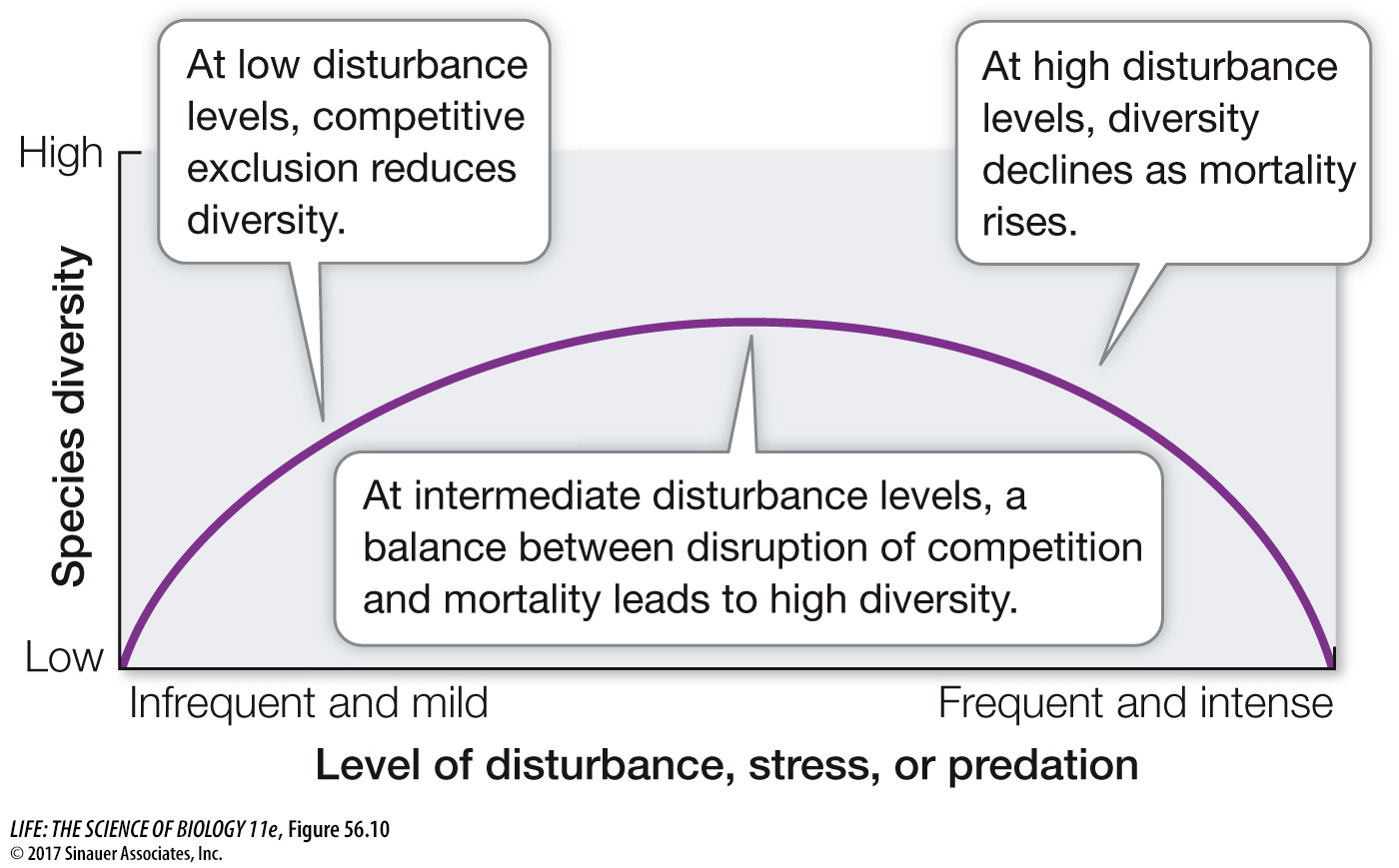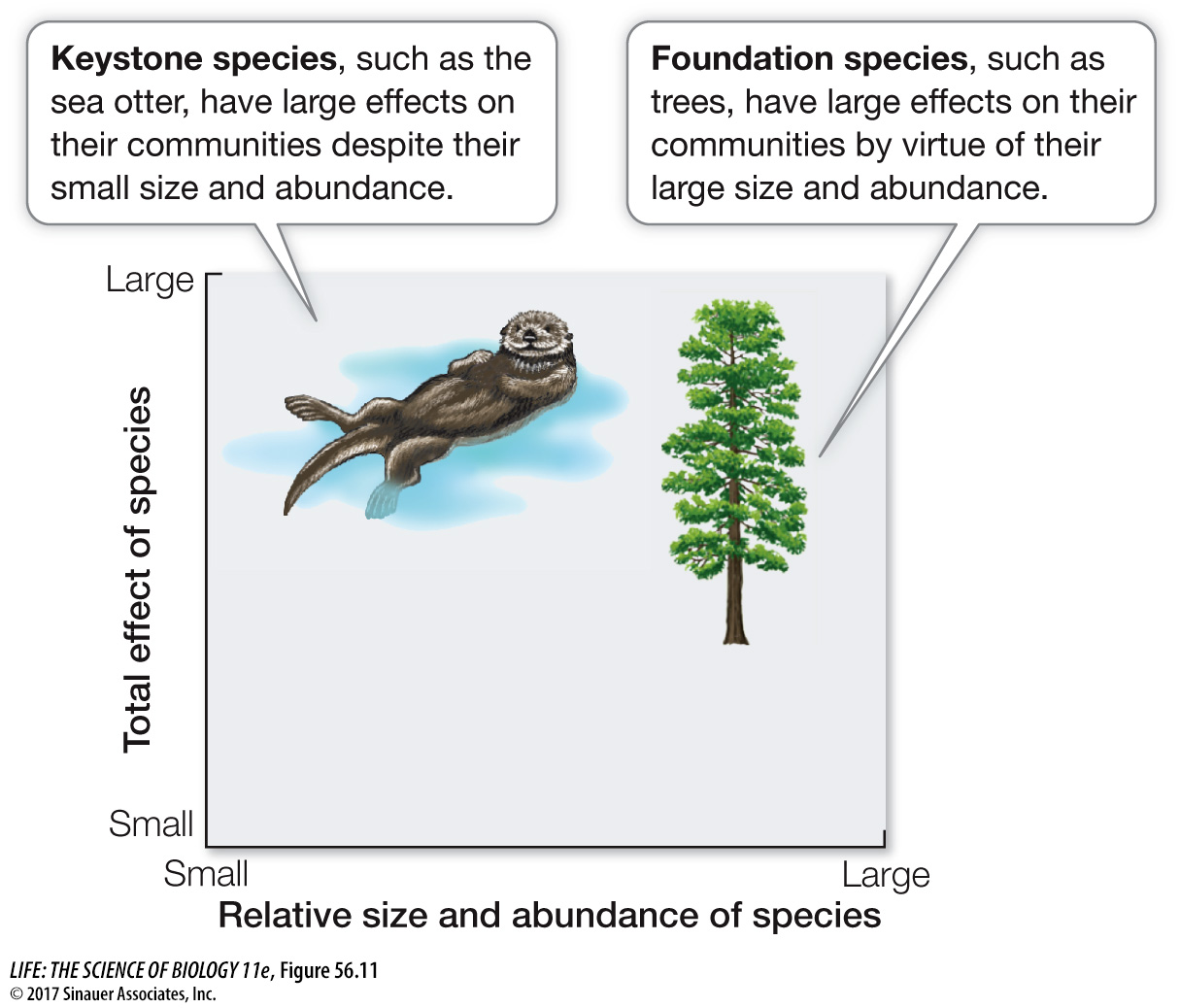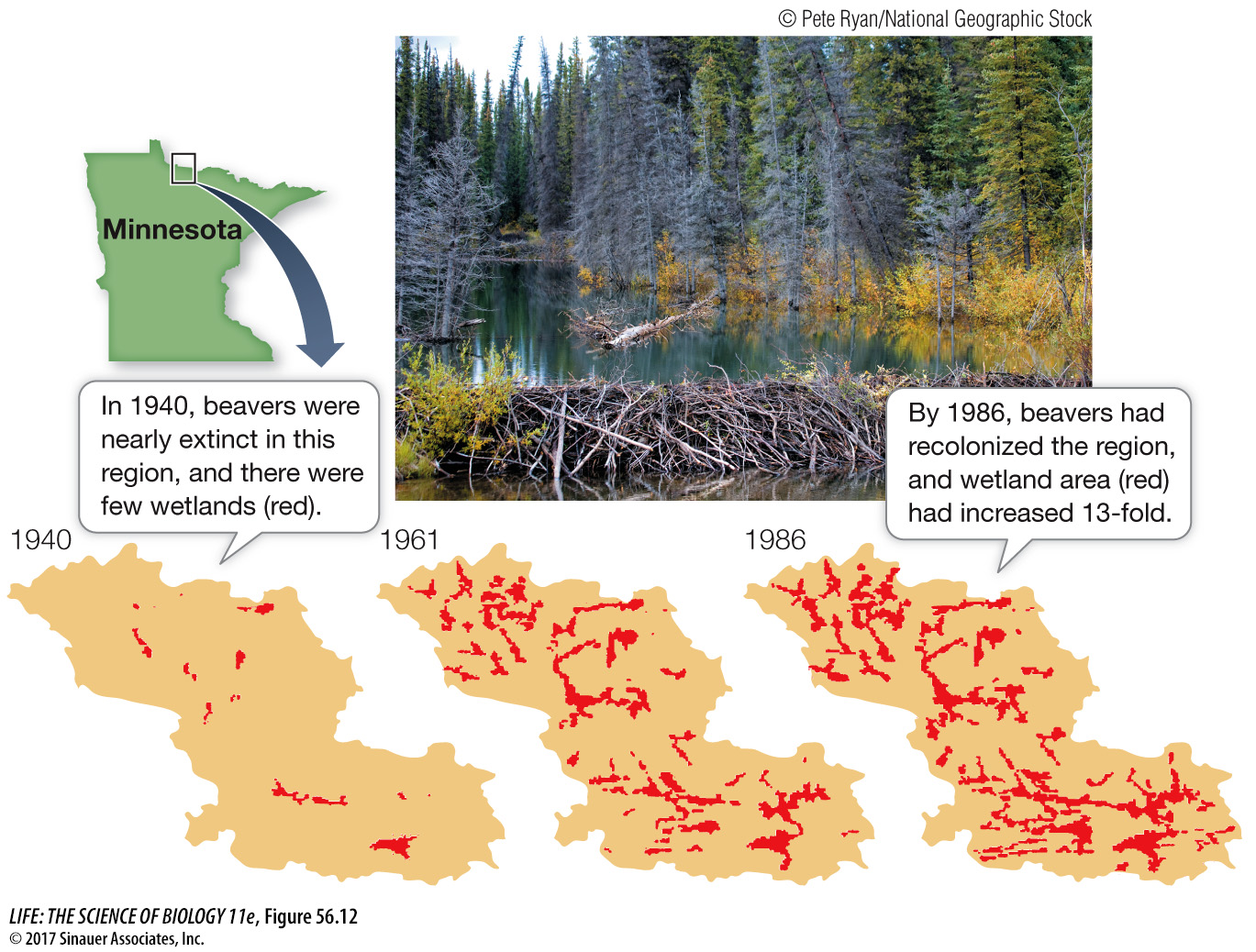Strongly interacting species often regulate community structure
The example of wolves in Yellowstone National Park offers clear evidence that species interactions vary considerably in their strength and direction, influencing the structure of communities. Some species have strong negative or positive effects on community structure, while others may have almost no effect at all. We can measure the interaction strength, or the effect of one species on the abundance of another species, by experimentally removing the “interactor” species and observing the response of the “target” species. If removing the interactor species causes a sharp decline in the population of the target species, we know that the interaction is a strong positive one. Alternatively, the interaction is strongly negative if the removal results in a large increase in the target species. If the removal has little or no effect on the abundance of the target species, then there is no interaction.
Some species can have strong negative effects on a community by excluding or diminishing populations of other species through competition for limiting resources. As discussed in Key Concept 55.3, competition is often asymmetrical: one species can be more negatively affected by the interaction than another. Asymmetrical competition leads either to competitive exclusion of the more negatively affected species (resulting in fewer species in the community than would be predicted by environmental conditions or dispersal alone) or to various mechanisms that promote coexistence, such as *resource partitioning.
*connect the concept As you saw with the bee–
Competition among species can also be mediated by factors that affect the dominant species’ ability to acquire resources, so-
The intermediate disturbance hypothesis describes how varying degrees of disturbance (an abiotic process that injures or kills individuals) affect species diversity in communities (Figure 56.10). Joseph Connell, the author of the classic work on barnacle competition (see Key Concept 55.3), noted that the level of disturbance (both frequency and intensity) experienced by a community could have strong effects on its species diversity. He hypothesized that species diversity would be greatest in communities with intermediate disturbance and lowest in communities with low or high disturbance. At low levels of disturbance, competition from dominant species would lead to competitive exclusion of the inferior species, resulting in lower species diversity in the community. At the other extreme, a major disturbance would cause high mortality rates, leading to the extinction of some species in the community and resulting in lower species diversity. At intermediate levels of disturbance, species diversity would be greatest because (1) the influence of the dominant species is reduced by the disturbance, allowing the subordinate species to coexist, and (2) the mortality rates are not as high, so extinction events are less likely to occur.

Three other types of species that have large effects on community structure are considered below.
KEYSTONE SPECIES As described in Key Concept 55.2, keystone species can have strong community-

Sea otters (Enhydra lutris) that inhabit kelp forests on the west coast of North America illustrate how important keystone species can be in regulating community structure. Sea otters feed on sea urchins (Strongylocentrotus spp.), which feed on kelp, establishing a trophic cascade. Without predation by sea otters, sea urchin populations can explode, resulting in voracious consumption of kelp. Stretches of nearshore habitat that become nearly devoid of kelp beds, called “urchin barrens,” can no longer support the diversity of life that is supported when kelp habitat is present.
FOUNDATION SPECIES Some strongly interacting species are capable of providing habitat and food for other species. These foundation species have a large effect on communities as a consequence of their large size or great abundance (see Figure 56.11). Trees are a good example of foundation species. For example, fig trees in tropical forests provide physical habitat for several thousand species of insects, non-
ECOSYSTEM ENGINEERING SPECIES Some species are specifically known for creating, modifying, or maintaining physical habitat for themselves and other species. These ecosystem engineering species can be either keystone or foundation species. These are species whose primary effect is to engineer the physical environment (rather than providing food), and they do not necessarily have great size or abundance in the community. For example, beavers create new habitats by cutting down (and killing) trees and using them to dam streams and create ponds and wetlands that provide habitat for species that would otherwise be unable to live in the area (Figure 56.12).
